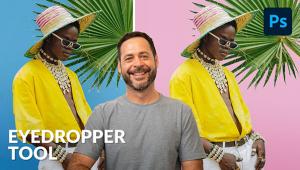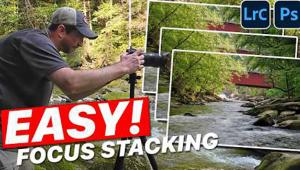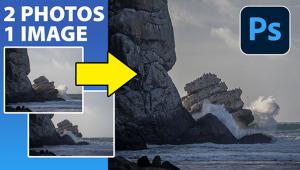The Long Ranger; With HDR Photography, What You Can See Is Now What You Can Get
In the early days of digital imaging, we were promised much. Suppliers, manufacturers, photo writers, and early-adopter photographers talked about how digital would allow us do more with photographs. We'd be able to see them instantly, send them quickly, and, most important to the serious-minded among us, control them creatively. Digital cameras and the digital process would allow us to do things we could never do before--like change the ISO in mid-shoot. We heard that we'd be able to capture images that were once impossible.
 |
|
|
At first many were skeptical. Technology had always promised a lot and delivered
mostly advertising slogans. Computers were going to make our workload easier,
our workweek shorter. Electronic communication would create the paperless office.
How'd those work out for you?
But digital imaging delivered. The promises were kept, and the end is nowhere
in sight.
 |
|
|
Digital isn't responsible for the development of High Dynamic Range
(HDR) photography, but it makes it easily accessible. In an HDR photograph we
can finally see reproduced on paper and displayed on a monitor the wide range
of tones that our eyes can perceive but no film or sensor can capture in a single
image.
HDR photography involves taking a series of exposures of the same scene, each
at a different EV setting, and using a software program to combine the images.
With your camera on a tripod, you take a bracket of three, four, or more exposures,
ranging from under- to overexposure; in that series you'll capture all
the shadows, highlights, and mid tones of the scene. The software--and
the decisions you make about how you're going to use it--will basically
do the rest. The result is an image that combines the best of our individual
takes, complete with color in the highlights and details in the shadows. What
you need is a camera capable of exposure compensation control (auto-bracketing
is a plus), a tripod, a computer, and the software.
The software performs essentially two functions: merging, which creates from
your exposures a 32-bit file that represents in one image the full dynamic range
of the scene; and tone mapping, which converts the file back to a range that's
able to be viewed on screen and on paper.
 |
|
|
I talked recently with Ferrell McCollough, a professional photographer who's
written the Complete Guide to High Dynamic Range Digital Photography. I didn't
want to find out the details of how the process works--that's in
his book, and in the books of others, of course; I wanted to know why he became
fascinated with HDR.
"I saw HDR photos for the first time at the Flickr website," Ferrell
says, "and I was blown away by the detail in the shadows. I didn't
know what it was yet, but the wow factor just grabbed me."
Eventually he picked up enough information to start doing it. "It opened
up the possibilities. I used to never take a camera out of my camera bag at
noon; in fact, I'd avoid any shooting after 9am and before 5pm. Now I
take the camera out at any time. HDR has expanded the time when I can shoot
and get good images."

















































